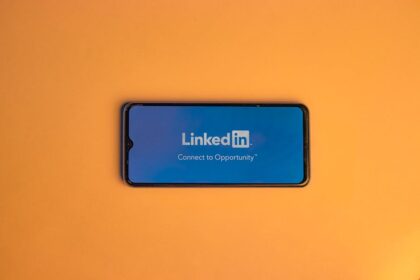Measuring True ROI from LinkedIn Ads requires a multifaceted approach that extends far beyond merely calculating the cost per click or impression. In the B2B landscape, where LinkedIn predominantly operates, the sales cycle is often protracted, and the buyer’s journey involves numerous touchpoints. Consequently, a simplistic return on investment (ROI) formula might provide a misleading picture of your campaigns’ effectiveness. True ROI, in this context, encompasses both the quantifiable financial returns and the less tangible but equally valuable strategic benefits, all rigorously tracked and attributed.
Understanding ROI in the Context of LinkedIn Ads
ROI, at its core, is a performance measure used to evaluate the efficiency or profitability of an investment. For marketing, it’s typically expressed as (Revenue from Investment – Cost of Investment) / Cost of Investment. However, for LinkedIn Ads, this formula needs significant nuance. Traditional, short-term ROI might fall short because LinkedIn is often a top-of-funnel or mid-funnel platform, initiating relationships rather than immediately closing deals.
The distinction between direct and indirect ROI is paramount. Direct ROI comes from immediate, trackable conversions like a demo request that directly leads to a sale within a measurable timeframe. Indirect ROI, conversely, stems from activities like brand building, thought leadership, or fostering engagement that contributes to sales down the line, even if not directly attributable to a single ad click. Long-term versus short-term ROI considerations are also critical. A LinkedIn ad campaign might not generate revenue in the first week but could fill the sales pipeline with high-quality leads that convert months later. Focusing solely on short-term metrics can lead to premature conclusions about campaign failure.
Key Performance Indicators (KPIs) are distinct from ROI. While KPIs like Click-Through Rate (CTR), Cost Per Lead (CPL), or Engagement Rate are essential for optimizing campaign performance, they are intermediate metrics. ROI is the ultimate business metric, directly linking ad spend to profit. For instance, a low CPL is a good KPI, but if those leads never convert to customers, the ROI is zero or negative. True ROI measurement requires connecting the dots from initial ad exposure through the entire sales pipeline to revenue recognition and customer lifetime value (CLTV).
Pre-Campaign Foundations for ROI Measurement
Effective ROI measurement begins long before your first ad goes live. It necessitates meticulous planning and the establishment of a robust tracking infrastructure.
1. Goal Setting: Ambiguity in campaign goals leads to unmeasurable outcomes. Goals for LinkedIn Ads must be SMART: Specific, Measurable, Achievable, Relevant, and Time-bound. Examples include:
- Lead Generation: Generate 50 Marketing Qualified Leads (MQLs) for product X at a CPL of under $150 within Q3.
- Brand Awareness: Increase brand mentions by 20% and achieve 500,000 unique impressions among target accounts within 6 weeks.
- Website Traffic: Drive 5,000 qualified visitors to our new solution page with a bounce rate under 30% and an average session duration of 2+ minutes.
- Engagement: Achieve a 5% engagement rate on thought leadership content among CXOs in the tech sector.
- Conversions: Secure 100 whitepaper downloads from decision-makers at target companies at a CPA of $75.
- Recruitment: Generate 20 qualified applications for senior software engineer roles within 4 weeks, reducing time-to-hire by 15%.
Each goal needs a clear definition of what constitutes success and how it will be measured.
2. Audience Definition: LinkedIn’s unparalleled targeting capabilities are its greatest strength. However, overly broad or ill-defined audiences dilute your ad spend and make ROI measurement difficult. Precision targeting by job title, industry, company size, seniority, skills, and even LinkedIn Groups ensures your message reaches the most relevant professionals. A highly targeted audience, even if smaller, is more likely to convert and yield a higher ROI than a vast, generic one. Define your Ideal Customer Profile (ICP) meticulously before segmenting on LinkedIn.
3. Tracking Infrastructure: This is the backbone of any reliable ROI calculation.
- LinkedIn Insight Tag: This is fundamental. Install it across your entire website. It allows you to:
- Track website visitors for retargeting.
- Measure conversions (e.g., form submissions, sign-ups, purchases).
- Understand demographic data of your website visitors.
- Leverage Matched Audiences based on website activity.
- Set up custom events for specific actions beyond standard page views. For example, tracking video plays, button clicks, or scroll depth can provide deeper insights into engagement.
- Google Analytics (or equivalent): Use UTM parameters religiously for every LinkedIn ad campaign and ad variation. This allows GA to identify traffic source, medium, campaign, content, and term. Set up specific Goals (for actions like form submissions, PDF downloads, time on site) and E-commerce Tracking (for product sales). Crucially, explore GA’s Multi-Channel Funnels to understand assisted conversions and the role LinkedIn plays in a longer conversion path. GA4, with its event-based data model, offers even greater flexibility in tracking nuanced user interactions relevant to LinkedIn ad impact.
- CRM Integration: This is perhaps the most critical component for B2B ROI. Platforms like Salesforce, HubSpot, or Zoho CRM must be configured to capture lead source information, including the specific LinkedIn campaign or ad that generated the lead. As leads progress through the sales pipeline (MQL, SQL, Opportunity, Won/Lost), the CRM tracks their status. This allows you to connect initial ad spend to actual revenue generated, calculate lead-to-opportunity rates, and opportunity-to-win rates directly from LinkedIn sources. Automated workflows can update lead statuses, enriching the data for ROI analysis.
- Offline Conversion Tracking: Not all conversions happen online. For high-value B2B deals, the final signature might be on a physical contract. Implement systems to manually or semi-automatically import offline conversions (e.g., closed-won deals) back into LinkedIn Campaign Manager and your CRM, matching them to the initial lead source. This provides a holistic view of the customer journey, bridging the digital gap.
- Call Tracking: If your LinkedIn Ads drive phone calls (e.g., to sales, support, or a booking line), integrate call tracking software (e.g., CallRail, WhatConverts). These tools can attribute calls to specific LinkedIn campaigns and even record conversations, providing valuable qualitative data on lead quality.
4. Attribution Models: Deciding how to assign credit to each touchpoint in a conversion path is complex but essential for accurate ROI.
- First-Touch Attribution: Gives 100% credit to the first marketing touchpoint. Useful for understanding initial awareness drivers.
- Last-Touch Attribution: Gives 100% credit to the last touchpoint before conversion. Simple, but often undervalues earlier stages.
- Linear Attribution: Distributes credit equally among all touchpoints.
- Time Decay Attribution: Gives more credit to touchpoints closer in time to the conversion.
- Position-Based (U-shaped/W-shaped) Attribution: Assigns more credit to the first and last touchpoints, with remaining credit distributed among middle interactions.
- Data-Driven Attribution (DDA): Uses machine learning to algorithmically distribute credit based on actual conversion paths. This is often the most accurate but requires significant data.
The choice of model depends on your business goals and sales cycle. For LinkedIn, which is often a discovery or consideration platform, a model that credits earlier touchpoints (like first-touch, linear, or time-decay) might be more appropriate than last-touch, especially for brand awareness or lead generation campaigns. Attribution challenges are significant, as users interact with multiple channels. The key is to pick a model and stick with it consistently to compare campaigns apples-to-apples.
5. Baseline Metrics: Before launching any campaign, establish benchmarks. What’s your current average CPL from other channels? What’s your average website conversion rate? Knowing these allows you to set realistic expectations and measure the incremental value LinkedIn Ads bring. Without baselines, you can’t truly ascertain improvement or success.
Measuring Direct ROI from LinkedIn Ads
Direct ROI measures the immediate, quantifiable financial returns from your campaigns. This typically involves connecting ad spend to specific revenue generated.
1. Lead Generation Campaigns:
- Cost per Lead (CPL): (Total Ad Spend / Number of Leads Generated). This is a foundational KPI.
- Lead Quality vs. Quantity: A low CPL means nothing if leads are unqualified. Implement lead scoring (in CRM/marketing automation) based on engagement, demographics, and firmographics. Track the percentage of MQLs (Marketing Qualified Leads) and SQLs (Sales Qualified Leads) from LinkedIn.
- Lead-to-Opportunity Rate: (Number of Opportunities from LinkedIn Leads / Total LinkedIn Leads). This indicates how many leads progress into active sales discussions.
- Opportunity-to-Win Rate: (Number of Won Deals from LinkedIn Opportunities / Total LinkedIn Opportunities). This is the sales team’s conversion efficiency.
- Customer Acquisition Cost (CAC) specifically from LinkedIn: (Total LinkedIn Ad Spend + Related Marketing/Sales Costs / Number of Customers Acquired from LinkedIn). Be sure to include internal team time, creative costs, and landing page development if accurately assigning costs for true CAC.
- Customer Lifetime Value (CLTV): This is the ultimate ROI metric. If you know the average revenue a customer brings over their entire relationship with your company, you can compare it directly to the CAC from LinkedIn. CLTV should ideally be significantly higher than CAC (e.g., 3:1 or more) for sustainable growth.
- Calculating ROI for Lead Gen:
- Assign an average value to a closed deal: Let’s say your average deal size from a LinkedIn-generated lead is $10,000.
- Multiply by the number of closed deals: 5 deals closed = $50,000 revenue.
- Subtract ad spend: If you spent $10,000 on LinkedIn Ads.
- ROI = ($50,000 – $10,000) / $10,000 = 4 or 400%.
This calculation becomes more robust when integrated with CRM data, allowing you to see the actual revenue for each specific deal sourced from LinkedIn.
2. Website Traffic Campaigns:
- Cost per Click (CPC) and Click-Through Rate (CTR): These are optimization metrics. High CTR and low CPC are good, but only if the traffic is qualified.
- On-site Engagement Metrics: In Google Analytics, track Bounce Rate, Pages Per Session, and Average Session Duration for LinkedIn-sourced traffic. High engagement indicates qualified visitors interested in your content. Compare these to your site average and other traffic sources.
- Conversion Rates on Landing Pages: If traffic campaigns lead to landing pages, track conversion rates for micro-conversions (e.g., newsletter sign-ups, viewing a pricing page) or macro-conversions (e.g., form submissions).
- Connecting Traffic to Pipeline: While not direct revenue, high-quality traffic to specific solution pages can indicate purchase intent. Monitor these visitors’ journey through your CRM if they eventually convert to leads via other means.
3. Conversion Campaigns (e.g., downloads, sign-ups, demo requests):
- Cost per Conversion (CPA): (Total Ad Spend / Number of Conversions). LinkedIn Campaign Manager provides this directly if the Insight Tag is configured correctly.
- Conversion Value: Assign a monetary value to each conversion type. For example, a whitepaper download might be worth $X based on historical conversion rates to a qualified lead. A demo request is worth more. A free trial sign-up even more.
- Calculating ROI for specific conversions: If a demo request has a historical conversion rate to customer of 10% and an average deal value of $10,000, then each demo request is “worth” $1,000. If your CPA for demo requests is $500, then your ROI is (($1000 – $500) / $500) = 1 or 100%. This is an estimated ROI but very useful for optimizing campaigns.
4. Recruitment/Talent Acquisition Campaigns:
- Cost per Hire (CPH) via LinkedIn Ads: (Total Ad Spend / Number of Hires Attributed to LinkedIn). This is often significantly lower than agency fees.
- Quality of Applicants: Track metrics like time-to-hire for LinkedIn-sourced candidates, interview-to-offer ratio, and retention rate of hires. A high retention rate for LinkedIn hires indicates strong candidate quality and higher long-term ROI.
- Reduction in external recruitment agency fees: Quantify the savings by hiring directly through LinkedIn instead of third-party recruiters.
- Value of a Quality Hire: While harder to quantify, a top performer can generate significantly more revenue or efficiency than an average hire. Consider the impact of filling critical roles quickly.
5. Event Promotion Campaigns:
- Cost per Registration: (Ad Spend / Number of Event Registrations).
- Attendance Rate: (Number of Attendees / Number of Registrations). A high attendance rate means your registrants are genuinely interested.
- Post-event conversion/pipeline: Track how many event attendees convert into MQLs, SQLs, or closed deals post-event. This requires meticulous follow-up and CRM integration.
Measuring Indirect & Long-Term ROI from LinkedIn Ads
Not all value from LinkedIn Ads translates directly into immediate revenue. Indirect ROI focuses on brand building, reputation, and pipeline nurturing.
1. Brand Awareness & Engagement:
- Impressions and Reach: While vanity metrics on their own, consistently high impressions among your target audience build brand recognition.
- Video Views: Track completion rates, not just views. A 75% video completion rate among your target audience indicates strong engagement with your message.
- Engagement Rate: (Likes + Comments + Shares + Clicks) / Impressions. A higher engagement rate suggests your content resonates.
- Follower Growth: An increase in company page followers indicates growing brand affinity and a larger organic audience for future content.
- Brand Mentions/Sentiment: Use social listening tools to monitor conversations about your brand, particularly after awareness campaigns. An increase in positive mentions suggests improved brand perception.
- Website Direct Traffic / Branded Searches: An increase in direct website traffic or searches for your brand name on Google can be a strong indicator of increased brand awareness driven by LinkedIn advertising. This is a powerful proxy metric for long-term brand value.
- Challenges in Monetizing Awareness Directly: It’s difficult to assign a direct monetary value to a single impression. However, stronger brand awareness shortens sales cycles, increases lead quality, and reduces overall marketing costs in the long run. Proxy metrics like brand lift studies or increased organic traffic help justify this spend.
2. Thought Leadership & Reputation:
- Shares of valuable content: When your content is shared, it expands your reach organically and positions your company as an authority.
- Inbound inquiries driven by content: Track direct messages or contact form submissions specifically referencing an ad or piece of content.
- Perceived Authority Increase: While hard to quantify, thought leadership contributes to trust, which is a significant factor in B2B purchasing decisions. Surveys or brand perception studies can gauge this.
3. Network Expansion:
- Connections Made: For personal branding or specific outreach, tracking relevant connections made through ad engagement can be valuable.
- Referral Business Generated: LinkedIn often fosters professional relationships that lead to referrals. While difficult to attribute directly, strong networking efforts via the platform can lead to future business.
Tools and Technologies for ROI Measurement
Integrating various tools is essential for a comprehensive view of LinkedIn Ad ROI. No single platform can provide the full picture.
1. LinkedIn Campaign Manager:
- Analytics and Performance Dashboards: Provides real-time data on impressions, clicks, CTR, CPL, CPA, video views, and form fills. You can break down performance by creative, audience, and objective.
- Conversion Tracking: Shows how many conversions (defined by your Insight Tag setup) resulted from your ads.
- Cross-Campaign Reporting: Allows you to aggregate data across multiple campaigns for a holistic view of your LinkedIn ad spend.
- Matched Audiences and Retargeting Performance: Track the performance of specific audience segments, including those based on website visitors or uploaded contact lists.
2. Google Analytics 4 (GA4):
- Event-Based Tracking: GA4 tracks every user interaction as an event, offering incredible flexibility for defining custom conversions relevant to your business (e.g., scroll depth, specific button clicks, video engagements).
- Custom Reports and Explorations: Create tailored reports to analyze LinkedIn-specific traffic, user behavior, and conversion paths. The “Path Exploration” and “Funnel Exploration” reports are particularly useful for visualizing user journeys.
- Multi-Channel Funnels: Crucial for understanding LinkedIn’s role in assisted conversions, showing how LinkedIn contributes to conversions even if it’s not the last click.
- User ID Tracking: If implemented, allows for cross-device tracking of a single user, providing a more complete picture of their journey.
3. CRM Systems (Salesforce, HubSpot, Zoho CRM, Microsoft Dynamics 365):
- Lead Progression Tracking: Monitor leads from initial LinkedIn inquiry through MQL, SQL, Opportunity, and Won/Lost stages.
- Revenue Attribution: The core of B2B ROI. CRMs can attribute closed-won deals directly to the initial lead source (e.g., “LinkedIn Ad – [Campaign Name]”).
- Pipeline Velocity: Track how quickly leads sourced from LinkedIn move through your sales funnel compared to other channels.
- Lead Quality Scores: Combine CRM data (e.g., job title, company size) with marketing engagement data to score leads and prioritize follow-up.
4. Marketing Automation Platforms (Marketo, Pardot, HubSpot Marketing Hub, ActiveCampaign):
- Lead Nurturing: Automate email sequences and content delivery to leads generated via LinkedIn, moving them down the funnel. Track engagement with these nurturing efforts.
- Lead Scoring: Dynamically score leads based on their interactions (e.g., website visits, content downloads, email opens) and demographic information.
- Multi-Touch Attribution: Many marketing automation platforms offer more sophisticated attribution models than basic ad platforms, providing a clearer picture of LinkedIn’s contribution across multiple touchpoints.
5. Call Tracking Software (CallRail, WhatConverts):
- Attribution of Phone Calls: Connect incoming phone calls directly to the LinkedIn ad that prompted them, even down to the keyword or ad group level.
- Call Recording and Analysis: Listen to calls to assess lead quality, understand common questions, and identify sales-ready leads.
- Integration with CRM: Pass call data and lead information directly into your CRM.
6. Data Visualization Tools (Tableau, Power BI, Google Looker Studio):
- Data Consolidation: Combine data from LinkedIn Campaign Manager, Google Analytics, CRM, and other sources into a single, comprehensive dashboard.
- Custom Reporting: Create highly customized reports and visualizations to highlight key ROI metrics, trend performance, and identify areas for optimization.
- Holistic View: Provides a unified “single source of truth” for marketing performance, enabling deeper insights that siloed data cannot offer.
7. Attribution Software (Bizible, BrightFunnel, Adobe Marketo Measure):
- Advanced Attribution Models: Dedicated attribution platforms offer sophisticated, data-driven attribution models that provide a more accurate distribution of credit across all marketing touchpoints.
- Revenue Attribution: Connect ad spend directly to revenue in your CRM, offering detailed insights into the ROI of every campaign and channel.
- Cross-Channel View: Provides a consolidated view of performance across all marketing channels, allowing for more intelligent budget allocation.
Advanced Strategies for Optimizing and Proving ROI
Beyond mere measurement, true ROI comes from continuous optimization informed by data.
1. A/B Testing: This is fundamental. Test ad creatives, headlines, ad copy, calls-to-action (CTAs), landing pages, and even audience segments. Small improvements in CTR or conversion rates can significantly impact ROI over time. For example, test two different value propositions in your ad copy to see which resonates more with your target audience. Test different image or video formats.
2. Targeting Refinements: Leverage LinkedIn’s deep targeting capabilities.
- Job Seniority & Function: Target decision-makers (CXO, VP, Director) for high-value B2B solutions.
- Skills & Groups: Reach professionals with specific skill sets or interests relevant to your offering.
- Company Size & Industry: Focus on companies that fit your Ideal Customer Profile.
- Account-Based Marketing (ABM): Upload lists of target companies and run specific campaigns just for employees at those companies. This can yield very high-quality leads, directly impacting ROI by focusing efforts on pre-qualified accounts.
- Lookalike Audiences: Once you have a high-converting audience, create lookalike audiences to expand your reach to similar professionals.
Continuous analysis of which targeting facets yield the best quality leads and conversions allows you to refine your approach.
3. Retargeting Strategies: Warm audiences convert at a higher rate.
- Website Visitors: Retarget users who visited specific pages on your website (e.g., pricing page, demo page) with relevant ads.
- Engagers: Target users who engaged with your previous LinkedIn ads or company page content.
- Lead Gen Form Openers/Abandoners: If using LinkedIn Lead Gen Forms, retarget those who opened but didn’t submit the form.
- Video Viewers: Retarget individuals who watched a significant portion of your video ads with a follow-up offer.
Retargeting campaigns often have significantly higher ROI due to the pre-existing interest of the audience.
4. Content Strategy for Conversion: Align your ad creatives and landing page content with the buyer’s journey.
- Awareness Stage: Use ads promoting educational content (blog posts, infographics, videos) to capture initial interest.
- Consideration Stage: Ads for whitepapers, webinars, case studies, or comparison guides.
- Decision Stage: Ads for demo requests, free trials, consultations, or direct product pages.
Ensuring a seamless and logical content progression from ad click to conversion improves conversion rates and therefore ROI.
5. Lead Nurturing Workflows: LinkedIn Ads often generate top-of-funnel leads. Robust lead nurturing (via email, content, sales outreach) is crucial to convert these into opportunities and customers. Integrate your marketing automation platform with your CRM to automate nurturing sequences for LinkedIn-sourced leads. Track how many leads move from MQL to SQL within these workflows.
6. Sales Enablement and Feedback Loops: Marketing ROI is inextricably linked to sales effectiveness.
- Clear Handoffs: Ensure sales teams receive LinkedIn leads promptly with all necessary context.
- Sales Training: Train sales on how to best follow up with LinkedIn-generated leads, understanding the context of the ad they saw.
- Feedback Mechanism: Establish a formal process for sales to provide feedback on lead quality. Are LinkedIn leads truly qualified? Do they fit the ICP? Is the information provided sufficient? This feedback is invaluable for refining targeting and ad creatives. If sales deem LinkedIn leads low quality, your ROI will suffer, regardless of your CPL.
7. Lifetime Value (LTV) Analysis: For a complete ROI picture, look beyond the initial sale. High LTV customers acquired through LinkedIn Ads signify exceptional long-term ROI. Analyze the LTV of customers sourced from LinkedIn versus other channels. If LinkedIn consistently brings in customers with higher LTV, it justifies a higher CAC. This requires robust CRM and possibly BI (Business Intelligence) tools to track customer longevity and revenue generation over time.
8. Cohort Analysis: Group customers acquired during a specific campaign period or through a particular ad set (a “cohort”) and track their performance over time. This helps identify which campaigns or audiences generate customers with the best long-term value and retention.
9. Marginal ROI Analysis: Understand the point of diminishing returns. At what point does spending more on LinkedIn Ads no longer yield a proportionate increase in ROI? This helps optimize budget allocation and avoids overspending on campaigns that have peaked in efficiency.
10. Experimentation and Budget Allocation: Treat your LinkedIn ad strategy as a series of ongoing experiments. Dynamically shift budget towards campaigns, audiences, and creatives that demonstrate the highest true ROI based on real-time data from your integrated tracking systems. Don’t be afraid to cut underperforming campaigns quickly.
Challenges and Pitfalls in LinkedIn Ads ROI Measurement
Despite the advanced strategies and tools available, several challenges can hinder accurate ROI measurement for LinkedIn Ads.
1. Data Silos: The biggest hurdle is often disconnected data sources. LinkedIn Campaign Manager provides ad performance, Google Analytics offers website behavior, and your CRM holds sales data. Without proper integration, you’re left with incomplete pictures. Manual data reconciliation is time-consuming and prone to errors. Investing in API integrations or data connectors is essential.
2. Attribution Complexity: As discussed, multi-touch journeys make assigning credit challenging. A lead might see a LinkedIn ad, then search on Google, visit your website, download a resource, attend a webinar, and finally request a demo. Which touchpoint gets the credit? Over-reliance on last-touch attribution can undervalue LinkedIn’s role in the early stages of the buyer journey, especially in B2B. Conversely, over-attributing to LinkedIn can happen if other channels aren’t properly tracked.
3. Defining “Value”: Monetizing brand awareness or engagement remains difficult. While these contribute to long-term success, their direct financial impact is hard to isolate. This can lead to under-investment in brand-building campaigns if only direct ROI is considered, or over-investment if their true financial impact is inflated. Proxy metrics and qualitative insights become crucial here.
4. Long Sales Cycles: The inherent nature of B2B sales means that leads generated today might not convert into revenue for months or even a year. This delay makes immediate ROI assessment difficult and requires patience and a robust system for tracking leads through the entire, extended pipeline. Waiting for a deal to close before calculating ROI can mean a significant lag in optimization.
5. Incomplete Tracking: A common pitfall is the improper installation or configuration of tracking codes. Missing LinkedIn Insight Tag on certain pages, incorrect custom conversion event setup, or errors in UTM parameter tagging can lead to significant data gaps. Regular audits of your tracking infrastructure are critical.
6. Vanity Metrics vs. Business Metrics: Getting distracted by vanity metrics like high impressions or follower counts, without connecting them to actual business outcomes (leads, opportunities, revenue), is a major pitfall. A campaign might look great on paper with high engagement, but if it’s not contributing to the pipeline, its true ROI is low.
7. Cost of Tools: Implementing a comprehensive ROI tracking infrastructure (CRM, marketing automation, data visualization tools, attribution software) requires significant investment. Small businesses might find this prohibitive, forcing them to rely on more basic, and potentially less accurate, methods. However, the insights gained can quickly justify the investment.
8. Internal Alignment: A lack of alignment between marketing and sales teams regarding lead definitions, lead quality, and the sales process can cripple ROI measurement. If sales don’t follow up on marketing-qualified leads, or if they dispute the quality of leads from a specific channel, the perceived ROI of marketing efforts will suffer. Regular syncs, shared dashboards, and joint KPIs are essential.
Case Studies / Practical Examples
Example 1: B2B SaaS Company Generating High-Quality MQLs
- Challenge: A B2B SaaS company struggled to generate high-quality MQLs for its enterprise-level software. CPL from other channels was high, and lead quality inconsistent.
- LinkedIn Strategy: Launched LinkedIn Ads targeting IT Directors and CIOs at companies with 500+ employees in specific industries (finance, healthcare). Ad creatives focused on pain points solved by their software, driving traffic to landing pages with gated content (e.g., “Definitive Guide to Cloud Security”).
- ROI Measurement:
- Tracking: LinkedIn Insight Tag, GA4 with custom events for whitepaper downloads, HubSpot CRM integrated for lead scoring and progression.
- Metrics: Tracked CPL (initially $180), Lead-to-MQL conversion rate (30%), and MQL-to-SQL conversion rate (15%). HubSpot attributed closed-won deals to the specific LinkedIn campaign.
- Results: Within 6 months, CPL decreased to $150. Lead-to-MQL rate improved to 40% due to refined targeting and content. Crucially, MQLs from LinkedIn had a 20% SQL conversion rate and a 10% opportunity-to-win rate, compared to 5% from other channels. Average deal size for LinkedIn-sourced customers was $50,000.
- True ROI Calculation: ($50,000 avg deal 10% win rate from LinkedIn MQLs (20% SQL conversion rate from MQLs)) = $1,000 value per LinkedIn MQL. If CPL was $150, and 40% of leads became MQLs, then CPA (MQL) = $150 / 0.4 = $375. ROI = ($1,000 – $375) / $375 = 1.66 or 166%. This indicated strong positive ROI due to superior lead quality and subsequent sales conversion, justifying continued investment and expansion of LinkedIn ad spend.
Example 2: Enterprise Solution Provider Increasing Brand Recall and Direct Inquiries
- Challenge: A niche enterprise solution provider had low brand awareness outside their existing client base, relying heavily on referrals. They wanted to increase inbound inquiries from large corporations.
- LinkedIn Strategy: Launched a series of “thought leadership” video campaigns targeting C-suite executives and VPs of operations in Fortune 1000 companies. Videos featured internal subject matter experts discussing industry trends and challenges (no direct sales pitch). Retargeting campaigns offered a “Strategic Consultation” for video viewers.
- ROI Measurement:
- Tracking: LinkedIn Video Ad Analytics (completion rates), GA4 (direct traffic, branded search volume), Salesforce CRM (inbound inquiry source).
- Metrics: Tracked video completion rates (average 65% for 30-second videos), LinkedIn Company Page follower growth (20% increase), increase in direct website traffic (15%), and branded organic search queries (10% increase). Most importantly, the number of inbound “Strategic Consultation” requests attributed to LinkedIn (via specific landing pages and Salesforce lead source) increased by 30%.
- True ROI Calculation: While direct revenue attribution was difficult for individual videos, the increase in highly qualified inbound consultation requests, which had a 25% close rate and average deal value of $200,000, demonstrated significant long-term impact. The cost per qualified inbound inquiry from LinkedIn was $2,000. Value per inquiry = $200,000 * 25% = $50,000. ROI = ($50,000 – $2,000) / $2,000 = 24 or 2400%. The brand lift metrics further supported the overall positive return.
Example 3: Recruitment Firm Reducing Time-to-Hire
- Challenge: A specialized recruitment firm faced high costs from job boards and lengthy time-to-hire for niche engineering roles, impacting client satisfaction.
- LinkedIn Strategy: Ran “Jobs” ads and “Spotlight” ads targeting passive candidates with specific engineering skills and experience levels. Used LinkedIn’s “Skills” and “Education” targeting extensively.
- ROI Measurement:
- Tracking: LinkedIn Campaign Manager (applications per ad), internal ATS (Applicant Tracking System) for candidate progression and hire source, HR system for time-to-hire and retention.
- Metrics: Cost per applicant (CPA), Cost per qualified applicant, Time-to-interview, Time-to-hire (TTI). Tracked the number of successful placements attributed to LinkedIn Ads.
- True ROI Calculation: LinkedIn Ads reduced CPH by 40% compared to traditional job boards. TTI for LinkedIn-sourced candidates was 3 weeks faster, reducing the cost of unfilled positions (estimated at $5,000 per week for senior roles). For 10 hires, this was $150,000 in saved time/cost. Plus, the agency fee savings (if they typically paid external recruiters) were significant. If total LinkedIn ad spend was $20,000 for these 10 hires, and the firm saved $10,000 per hire on external fees + $15,000 in TTI savings = $25,000 per hire, then ROI = (($25,000 * 10) – $20,000) / $20,000 = ($250,000 – $20,000) / $20,000 = 11.5 or 1150%. This showcased a powerful ROI beyond just the cost of the ad.











